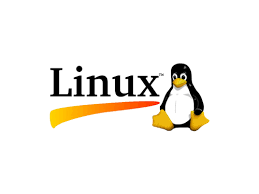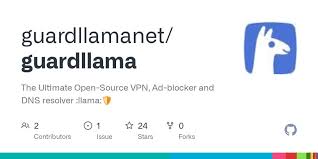Enhancing Remote Access: TightVNC on Ubuntu
The Power of TightVNC on Ubuntu
Ubuntu, one of the most popular Linux distributions, offers a wide range of features and functionalities to its users. One such feature is TightVNC, a lightweight and efficient remote desktop software that allows users to access their Ubuntu system from anywhere in the world.
TightVNC stands for “Virtual Network Computing,” and it enables users to connect to their Ubuntu desktop remotely over a network connection. Whether you need to access your Ubuntu machine from another room in your house or from a different country, TightVNC makes it possible with ease.
Setting up TightVNC on Ubuntu is straightforward. Users can install the TightVNC server on their Ubuntu system and then use a VNC viewer on another device to establish a remote connection. This enables seamless control of the Ubuntu desktop as if you were sitting right in front of it.
With TightVNC on Ubuntu, users can perform a variety of tasks remotely, such as troubleshooting issues, accessing files, running applications, and even providing technical support to others. The flexibility and convenience offered by TightVNC enhance productivity and efficiency for Ubuntu users.
Moreover, TightVNC ensures secure remote connections by encrypting data transmission between the server and viewer. This encryption helps protect sensitive information and maintains the privacy and integrity of the remote session.
In conclusion, TightVNC on Ubuntu opens up a world of possibilities for users who require remote access to their desktop environment. Whether for personal use or professional purposes, the power of TightVNC combined with the robustness of Ubuntu creates a seamless and reliable remote desktop experience.
Top 8 Advantages of Using TightVNC on Ubuntu for Remote Desktop Access
- Efficient remote desktop software
- Easy setup process on Ubuntu
- Allows remote access to Ubuntu desktop from anywhere
- Enables seamless control of Ubuntu system
- Enhances productivity and efficiency
- Secure data transmission with encryption
- Ideal for troubleshooting and technical support
- Provides flexibility for personal and professional use
Challenges and Limitations of Using TightVNC on Ubuntu: Key Considerations
- Limited performance on slower network connections
- Potential security vulnerabilities if not properly configured
- Requires manual configuration for optimal settings
- Occasional compatibility issues with certain devices or operating systems
- Limited features compared to more advanced remote desktop solutions
- May experience lag or latency during remote sessions, impacting user experience
- Can be challenging for beginners to set up and troubleshoot
Efficient remote desktop software
TightVNC on Ubuntu stands out as an efficient remote desktop software solution, offering users the ability to seamlessly access their Ubuntu system from anywhere with minimal latency and high performance. Its lightweight nature ensures that remote connections are established swiftly, allowing for smooth navigation and interaction with the Ubuntu desktop environment. This efficiency not only enhances productivity but also provides a user-friendly experience for individuals looking to remotely manage their Ubuntu system with ease and speed.
Easy setup process on Ubuntu
Setting up TightVNC on Ubuntu is a breeze, thanks to its user-friendly installation process. Ubuntu users can quickly install the TightVNC server on their system and configure it with minimal effort. With clear instructions and straightforward steps, even those new to remote desktop software can easily set up TightVNC on Ubuntu in no time. This ease of setup ensures that users can swiftly establish remote connections and start accessing their Ubuntu desktop from anywhere with convenience and efficiency.
Allows remote access to Ubuntu desktop from anywhere
One of the key advantages of TightVNC on Ubuntu is its ability to facilitate remote access to the Ubuntu desktop from any location. This feature empowers users to connect to their Ubuntu system from virtually anywhere in the world, providing unparalleled flexibility and convenience. Whether users need to access important files, troubleshoot issues, or run applications on their Ubuntu desktop while away from their physical workspace, TightVNC ensures seamless remote connectivity, enhancing productivity and efficiency for users on the go.
Enables seamless control of Ubuntu system
TightVNC on Ubuntu offers the invaluable advantage of enabling seamless control of the Ubuntu system from a remote location. This feature allows users to effortlessly access and manage their Ubuntu desktop as if they were physically present in front of it. By providing a smooth and responsive remote desktop experience, TightVNC empowers users to navigate their Ubuntu system with ease, enhancing productivity and convenience for various tasks and activities.
Enhances productivity and efficiency
The integration of TightVNC on Ubuntu significantly enhances productivity and efficiency for users by enabling seamless remote access to their desktop environment. This feature allows individuals to perform tasks, troubleshoot issues, access files, run applications, and provide technical support from any location. By eliminating the need to be physically present at the Ubuntu system, TightVNC empowers users to work more flexibly and effectively, leading to increased productivity and streamlined workflows. The convenience offered by TightVNC on Ubuntu ultimately translates into time-saving benefits and improved efficiency in various personal and professional settings.
Secure data transmission with encryption
One of the standout benefits of TightVNC on Ubuntu is its ability to ensure secure data transmission through encryption. By encrypting the communication between the TightVNC server and viewer, sensitive information remains protected during remote desktop sessions. This robust encryption feature not only safeguards data privacy but also enhances the overall security of remote connections, giving users peace of mind when accessing their Ubuntu system from anywhere in the world.
Ideal for troubleshooting and technical support
TightVNC on Ubuntu excels as an invaluable tool for troubleshooting and technical support. With its remote desktop capabilities, users can easily access and control Ubuntu systems from a distance, making it ideal for diagnosing issues, configuring settings, and providing assistance to others. The ability to view and interact with the Ubuntu desktop remotely allows for efficient problem-solving without the need for physical presence, saving time and resources. TightVNC’s seamless connection and secure data transmission ensure a smooth troubleshooting process, making it a go-to solution for resolving technical issues effectively on Ubuntu systems.
Provides flexibility for personal and professional use
TightVNC on Ubuntu offers a significant advantage by providing flexibility for both personal and professional use. Whether users need to access their Ubuntu desktop remotely for personal tasks such as accessing files or running applications from a different location, or for professional purposes like troubleshooting technical issues or providing remote support to colleagues, TightVNC enables seamless and convenient remote access. This flexibility empowers users to stay productive and connected to their Ubuntu system regardless of their physical location, enhancing both personal convenience and professional efficiency.
Limited performance on slower network connections
When using TightVNC on Ubuntu, one notable drawback is its limited performance on slower network connections. The efficiency and responsiveness of remote desktop access can be compromised when the network speed is slow, leading to delays in screen updates and interactions. This limitation may hinder the user experience, especially when attempting to perform tasks that require real-time responsiveness or high graphical fidelity. Users relying on TightVNC over slower networks may encounter issues such as lagging visuals or delayed input responses, which can impact productivity and usability. It is important for users to consider the network speed and performance requirements when utilising TightVNC on Ubuntu to ensure a smoother remote desktop experience.
Potential security vulnerabilities if not properly configured
Potential security vulnerabilities may arise with TightVNC on Ubuntu if not properly configured, posing a significant con for users. Inadequate configuration settings can leave the remote desktop connection susceptible to potential breaches and unauthorized access. Without implementing robust security measures such as strong authentication protocols, encryption, and firewall protection, sensitive data and system integrity may be compromised. It is crucial for users to carefully configure TightVNC on Ubuntu to mitigate these security risks and ensure a safe and secure remote desktop environment.
Requires manual configuration for optimal settings
One drawback of using TightVNC on Ubuntu is that it often requires manual configuration to achieve optimal settings. Users may need to adjust various parameters and settings to ensure smooth performance and usability, which can be time-consuming and challenging for those less familiar with VNC configurations. This manual setup process may deter some users who prefer a more straightforward and automated setup for remote desktop access on their Ubuntu system.
Occasional compatibility issues with certain devices or operating systems
Occasional compatibility issues may arise when using TightVNC on Ubuntu, particularly when connecting to certain devices or operating systems. These issues can result in connectivity challenges and hinder the seamless remote desktop experience that TightVNC aims to provide. Users may encounter difficulties establishing connections or experience lagging performance when trying to access their Ubuntu system from incompatible devices or operating systems. It is important for users to be aware of these potential compatibility issues and explore alternative solutions or workarounds to ensure a smoother remote desktop experience with TightVNC on Ubuntu.
Limited features compared to more advanced remote desktop solutions
While TightVNC on Ubuntu offers convenient remote desktop access, it falls short in terms of features when compared to more advanced remote desktop solutions. The limited feature set of TightVNC may restrict users who require advanced functionalities such as file transfer capabilities, audio streaming, and multi-user support. These limitations can impact the overall user experience, especially for those seeking a comprehensive remote desktop solution with a wider range of tools and options. Users looking for more sophisticated features may find that other remote desktop solutions better cater to their needs and provide a more robust and versatile remote access experience.
May experience lag or latency during remote sessions, impacting user experience
During remote sessions using TightVNC on Ubuntu, one potential drawback that users may encounter is the possibility of experiencing lag or latency. This delay in response time can impact the overall user experience, making interactions with the remote desktop less smooth and responsive. Factors such as network connectivity, system resources, and distance between the client and server can contribute to this issue. While TightVNC offers convenience and accessibility for remote access to Ubuntu systems, users should be aware that occasional lag or latency may occur, affecting the real-time performance of applications and tasks during remote sessions.
Can be challenging for beginners to set up and troubleshoot
Setting up and troubleshooting TightVNC on Ubuntu can pose a challenge for beginners due to its technical nature. Configuring the server, managing network settings, and resolving connectivity issues may require a certain level of expertise that novice users might find daunting. Additionally, troubleshooting any errors or compatibility issues that arise during the setup process can be complex for those unfamiliar with VNC technology. However, with patience and guidance from online resources or community forums, beginners can gradually overcome these obstacles and harness the full potential of TightVNC on Ubuntu for remote desktop access.










